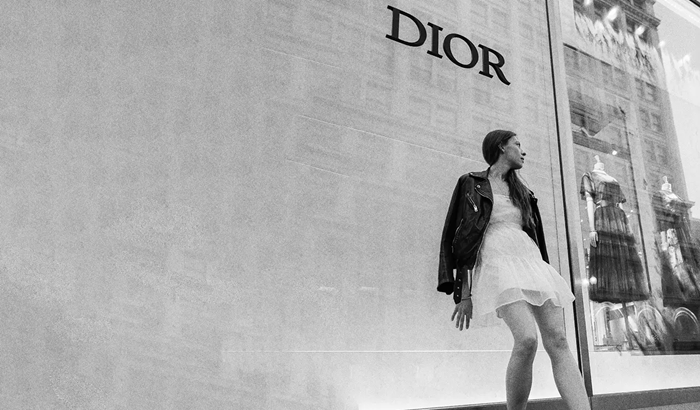
The champagne wishes and caviar dreams of the luxury market are facing a sobering reality check. A new report released this Monday by Business of Fashion and McKinsey paints a picture of an industry grappling with shifting consumer behaviors and a slowing global economy. As Rahul Malik, Chief Growth Officer at The Business of Fashion, aptly puts it, "The luxury goods market has created its own crisis, and it won’t recover until after 2027." The once-unstoppable growth engine of luxury is predicted to sputter, with a mere 1-3 per cent growth forecast between 2024 and 2027. This slowdown marks a significant departure from the heady days of double-digit growth, forcing luxury brands to re-evaluate their strategies and redefine their value proposition.
Key Change Drivers:
Several factors are contributing to this luxury shakeup:
Economic slowdown: Global economic headwinds are making even the ultra-wealthy more cautious with their spending. Rising inflation and geopolitical uncertainty are prompting a reassessment of luxury purchases.
Shifting consumer preferences: Experiences are the new luxury. Consumers are increasingly prioritizing travel, wellness, and personal growth over material possessions. This shift is reflected in the report's findings, which indicate a growing preference for high-end travel and wellness experiences over traditional luxury goods like watches and apparel. "There’s no doubt: it will take more to win shoppers’ hearts (and wallet-shares) now as they shift their gaze to high-end travel and wellness experiences instead," states the report.
Market saturation and price hikes: Over the past few years, many luxury brands aggressively increased prices and expanded production to capitalize on surging demand. This strategy, while profitable in the short term, diluted the sense of exclusivity and craftsmanship that defines luxury. The result? Even high-net-worth individuals are balking at the price tags. As the report highlights, "Now, even the industry’s highest spenders, who are expected to contribute up to 80 per cent of luxury spending, are turned off by the price hikes."
Rise of ‘Quiet Luxury’: Conspicuous consumption is out, understated elegance is in. Consumers are gravitating towards brands that emphasize quality, craftsmanship, and timeless design over flashy logos and overt branding. This trend favors smaller, boutique brands that offer a more personalized and discreet luxury experience. Ida Palombella, Global Fashion & Luxury Co-lead at Deloitte, explains this shift: "Quiet luxury is a significant part of this trend, emphasizing understated elegance, high-quality craftsmanship, and timeless design over overt branding or flashy logos. Boutique luxury houses are particularly well-positioned to embody quiet luxury.”
Data and Insights:
|
Region |
Projected Growth (2024-2027) |
|
China |
Slowing |
|
Europe |
Slowing |
|
Middle East |
Strong Growth |
|
India |
Strong Growth |
Bain & Company's November report revealed that only a third of the luxury sector experienced positive growth, highlighting the impact of shifting consumer habits and economic pressures.
The State of Fashion report indicates that luxury's highest spenders, who contribute up to 80 per cent of luxury spending, are now resisting price hikes.
Prada's recent success with Miu Miu underscores the growing appeal of smaller, more niche luxury brands. Miu Miu's revenue soared by 105 per cent in Q3 2024, contrasting sharply with the declining sales of giants like LVMH.
Case Studies:
Prada's Miu Miu: The explosive growth of Miu Miu demonstrates the potential of smaller labels within luxury conglomerates to capture the changing consumer mood. By offering a distinct aesthetic and a more accessible price point, Miu Miu has resonated with shoppers seeking individuality and value.
LVMH's diversification: While LVMH experienced an overall sales decline, its beauty and selective retailing segments performed well. This highlights the importance of diversification within the luxury sector and the growing consumer interest in experiences and personalized services.
Luxury market at crossroads
The luxury market is at a crossroads. To thrive in this new era, brands must adapt to the evolving demands of consumers. This means:
Redefining value: Luxury can no longer be solely about price and exclusivity. Brands must focus on delivering exceptional experiences, personalized services, and a strong sense of community. As Malik emphasizes, "customers will need to be 'reconvinced of luxury’s value proposition.'
Embracing innovation: Continuous innovation is crucial to justify premium pricing. This includes exploring new materials, technologies, and sustainable practices.
Cultivating authenticity: Consumers are seeking genuine connections and meaningful stories. Brands need to communicate their values and heritage in an authentic and engaging way.
The luxury market is not doomed, but it is undergoing a profound transformation. By embracing change and adapting to the new realities of the market, luxury brands can ensure their continued relevance and success in the years to come.












